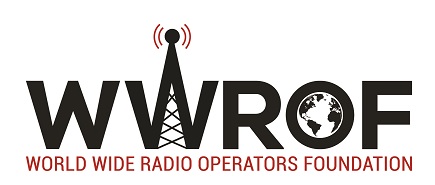
World Wide Digi DX Contest


World Wide Digi DX Contest

This page contains information about the origin and thinking behind the founding of the WW Digi DX Contest.
Q: Why was the WW Digi DX Contest created?
FT8 has been rapidly adopted as the most popular daily HF operating mode since its public debut in mid-2017. It is fitting that the premier World Wide contest series be extended to include this new age digital mode.
Q: Why are there two modes in this contest?
FT4 and FT8 are not diverse modes like CW, SSB and RTTY. They are variations of the same mode. FT8 is optimized for DXing and can decode weaker signals than FT4. But, FT4 is twice as fast, making it nice for contesting. Since the World Wide DX series of contests are focused on DXing, it makes sense to allow both modes so the operator can strategically choose FT4 for QSO rate and FT8 for weaker DX. Top WW Digi operators will develop skill in using each protocol appropriately.
Q: Why not just add the FT modes to the CQ WW RTTY DX Contest?
The FT modes are substantially different than RTTY, much like CW is different than RTTY. The FT modes really justify an additional mode contest. There is a place for mixed mode contests, but not every contest needs to be mixed mode. CW, SSB and RTTY modes are mostly single mode contests and that seems to work well.
Q: Why isn’t the contest period 48 hours like the other World Wide contests?
One of the most common complaints about 48-hour “marathon” contests is the physical challenge in addition to the strain on family life and other life priorities. If there is strong feedback for a longer contest period, the contest committee will certainly consider.
Q: Why are Grid Fields, rather than Grid Squares, used for multipliers?
There are 324 Grid Fields defining the earth’s surface, whereas 32,400 Grid Squares define the same area. Using Grid Fields makes the rarer Fields much more desirable for an additional multiplier. Contrastingly, Grid Squares have so many available possibilities, there is little incentive to work the rare ones. Grid Field multipliers are more akin to a World Wide DX contest style and Grid Square multipliers are more similar to WPX call sign prefix multipliers.
Q: Why are Grid Squares, rather than Grid Fields, used for distance-based QSO points?
Grid Fields are relatively large, 2,226 km by 4,453 km. Station QTHs skewed from the grid center will be advantaged in some directions while disadvantaged in other directions. This defeats the purpose of using the grid system for distance-based scoring. By comparison, Grid Squares are 223 km by 445 km which greatly reduces these discrepancies when calculating distances that are divided by 3,000 km to get QSO points.
Q: Why are there High Power categories in a weak signal mode contest?
This was seriously debated with the conclusion to include the High Power category and see how the first event plays out. “Weak signal mode” doesn’t necessarily translate to low power. Still, the committee was partial to a 100-watt maximum power limit. There are legitimate justifications for power over 100 watts. A remote location that is a compromised contest QTH might need higher power to even be copied by other FT stations. The real issue is whether a high-power participant is QRMing neighboring QSOs. The deeply narrow bandwidth of the FT protocols greatly mitigates the otherwise QRM from higher power stations. All amateurs, contesting or not, are bound by the principle, and in the US, the FCC regulations, to use only the amount of power necessary to sustain communication. Eliminating the High Power category challenges otherwise higher power operators to be honest and reduce their power.